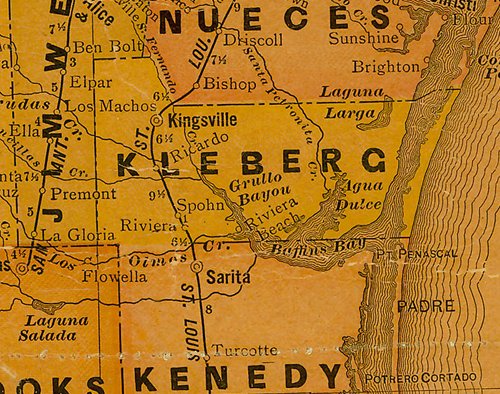Riviera, Texas. (original) (raw)
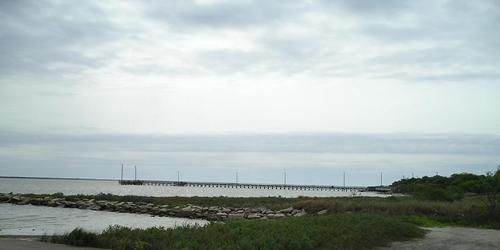
Riviera, Texas' turns 100 on November 10, 2007 History in a Seashell
Theodore Koch purchased the land around present Riviera from the King Ranch in 1907. He established the town of Riviera on the St. Louis, Brownsville and Mexico Railroad tracks. Koch had actually visited the French Riviera and evidently had fond memories (and a good imagination) for that's what he named it. A couple from Chicago built the first house, but the climate didn't agree with the wife. They left and Koch moved in and ran the building as a hotel.
1910 brought the new bank building (the State Bank of Riviera) and a telephone system. The telephone exchange was operated out of a private residence. Why? Because that's the way they did things in 1910. The exchange didn't move until 1975.
Koch's plan was to develop both Riviera and Riviera Beach. The two were at first connected by a simple dirt road, although a landscaped boulevard was planned. In 1912 Koch had a railroad line extended from Riviera and the futures of both towns looked bright. The train was a streamlined affair with round windows resembling portholes (no photos available). The train ran several times per month, bringing prospective land buyers and future residents. It also resulted in the development of the town of Vattman.
By 1916 Riviera Beach had a park designed by a florist. Not just any florist, but one imported from Pasadena, California. The resort's infrastructure was excellent, but a seven-year drought ruined things. Then a hurricane blew in on August 16, 1916 and Riviera Beach was nearly wiped away as clean as Indianola. They rebuilt, but things were never quite the same.
Riviera did survive, however, and finally got around to incorporating in 1964.
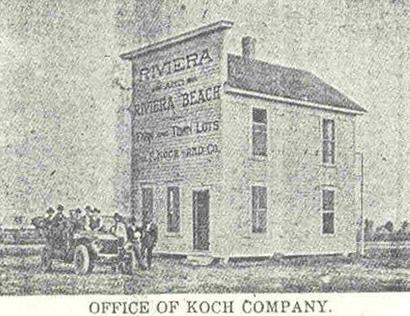
Office of Koch Company
Photo courtesy Gerald Walker

The Koch family in November of 2007 at Riviera's 100th Anniversay
Photo courtesy Gerald Walker
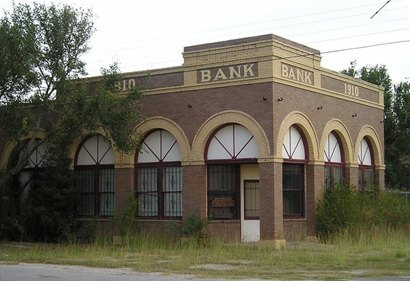
You'll need to get off the highway to see the town
Photo courtesy Sarah Reveley, 2007
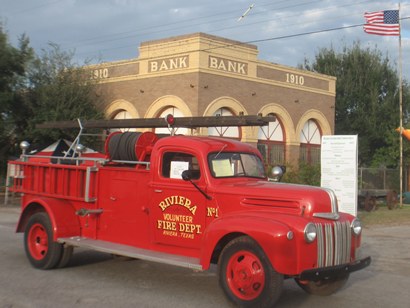
Riviera's First Fire Truck and Bank Building Museum
Photo courtesy Gerald Walker, October 2007
More Texas Banks | Texas Museums

If you go:
Riviera is a town where you should watch your speed. Because it's on the highway and there is only one traffic signal, the 35 mph limit is rigidly enforced. There's also a school zone that includes the highway.
To get the full picture of the town's history we would recommend taking the short drive to Riviera Beach. Although there is nothing left of Mr. Koch's envisioned resort - you can see that his plans were workable, had nature not been so cruel. On the map Baffin Bay and Loyola Beach look protected by Padre Island.
Riviera Beach connects with Loyola Beach just a few miles north, and for birders, this is where they'll find K - Huber Park. You can then return to Hwy 77 by FM 628 that passes the former town of Vattman, Texas.

Riviera in its heyday
Vintage photo courtesy Gerald Walker
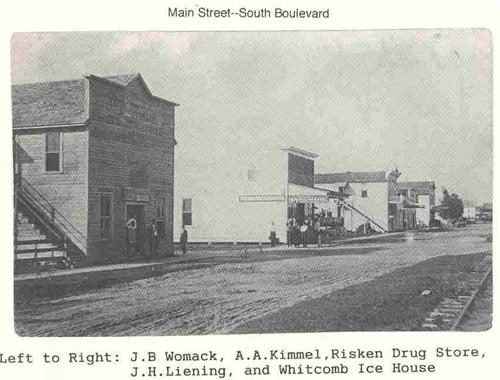
Riviera main street
Photo courtesy Gerald Walker
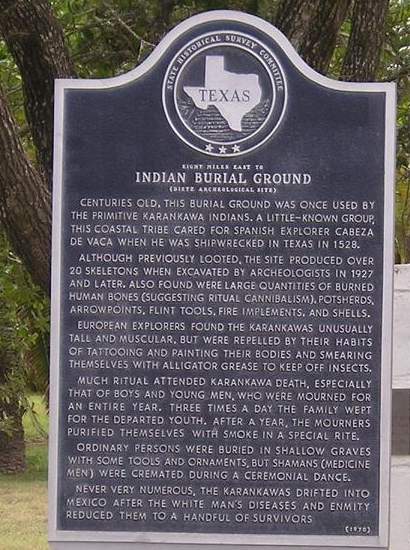
"Eight miles east to Indian Burial Ground" historical marker
Photo courtesy Sarah Reveley, 2007
Historical Marker (Intersection of US 77 & FM 771 in Riviera)
Indian Burial Ground
(Dietz Archeological Site)
Centuries old, this burial ground was once used by the primitive Karankawa Indians. A little-known group, this coastal tribe cared for Spanish explorer Cabeza de Vaca when he was shipwrecked in Texas in 1528.
Although previously looted, the site produced over 20 skeletons when excavated by archeologists in 1927 and later. Also found were large quantities of burned human bones (suggesting ritual cannibalism), potsherds, arrowpoints, flint tools, fire implements, and shells.
European explorers found the Karankawas unusually tall and muscular, but were repelled by their habits of tattooing and painting their bodies and smearing themselves with alligator grease to keep off insects.
Much ritual attended Karankawa death, especially that of boys and young men, who were mourned for an entire year. Three times a day the family wept for the departed youth. After a year, the mourners purified themselves with smoke in a special rite.
Ordinary persons were buried in shallow graves with some tools and ornaments, but shamans (medicine men) were cremated during a ceremonial dance.
Never very numerous, the Karankawas drifted into Mexico after the white man's diseases and enmity reduced them to a handful of survivors.
1970

"Civil War - Raid from Camp Boveda" historical marker
Photo courtesy Sarah Reveley, 2007
Historical Marker (Intersection of US 77 & FM 771 in Riviera)
Civil War
Raid from Camp Boveda
On December 23, 1863, Captain James Speed of General Napoleon J. T. Dana's Brownsville-based Federal army force raided the unguarded King Ranch. Objectives to take or kill Captain Richard King and destroy the Confederate cotton trade. King, forewarned, escaped.
At the ranch the raiders killed Francisco Alvarado, captured confederate Captains John Brown, Alvin Dix, W. S. Gregory and James McClearly and Chaplain Hiram Chamberlain; rifled all buildings; dispersed ranch employees, set the slaves free, confiscated all the horses and mules, impounded Confederate cotton, saying that if it were burned or moved, King's life would be forfeited; warned of more raids from Boveda.
Mrs. King and her children moved to San Antonio for the durations of the war, and the confederate cavalry of Colonel J. S. "RIP" Ford - called Cavalry of the West - came to protect the cotton road and the area. Federate units moved away from Boveda.
Camp Boveda was at a ford 2 miles east of here on Los Olmos Creek -- Lot 1, block 15, Koch subdivision one, present Poteet Ranch.
Its seven cypress-walled water wells probably had served the army of General (later president) Zachary Taylor in 1846.
1965
Riviera, Texas Forum
- Subject: Loyola Beach and Riviera
Upon reading your article regarding Loyola Beach and Riviera, I noticed it was written by a Wayne Simms. As I remember, Wayne was stationed at site 55 in Riviera, in the Navy base located in Kingsville. I corresponded with him while he was stationed in Alaska. Then, I lost track of his whereabouts. He was a family friend. He would have known me as Lynda or Lynn Pace. My mother, Gracie, owned the Ranch Cafe in Riviera. By the way, my Mom owned, operated, and named the original The Green Frog, and coined the phrase, "Service with a hop!" I would be inerested in knowing if this is the same "Wayne Simms" I knew. I write prose and poetry, jingles and songs, and a few articles, all about Texas. In fact, I am now in the process of developing the old "Hitching Post," of which you showed a picture. You ought to see it now! ... Thank you.- Lynn (Pace) Sasser, August 11, 2006 - Subject: Riviera, Texas
My Grandfather was born in Riviera (he pronounces it Rivera as well) in 1913 because his mother and father had moved there in 1912 due to the efforts of a land promoter, most likely Mr. Koch. They did not stay however and moved on to land between Taft and Gregory, as Riviera was not economically viable as per my greatgrandparents' recollections. They ultimately relocated to Corpus Christi in the 1960s. - Jon Todd Koenig, September 25, 2005 - I know little about this place but what I've learned is amazing. Pronounced "Rivera" by locals, it was a dream of a man blessed with money but cursed with a location too remote, even by today's standards. Located on Baffin Bay just south of Loyola Beach, it once sported a large wooden hotel ( burned in the teens, I believe) a railroad to Corpus Christi, a bank along with many other buildings to include sidewalks (still existing) and fire hydrants. A local restaurant has pictures including one of the hotel. Built to lure citizens to a "Riviera" type setting, I believe it failed due to being so remote and possibly due to hurricane strike. I think it was there from the 1880's until the hotel fire in the early 1900's. - Chip Haymond, August 06, 2004
Texas Escapes, in its purpose to preserve historic, endangered and vanishing Texas, asks that anyone wishing to share their local history and vintage/historic photos, please contact us.
